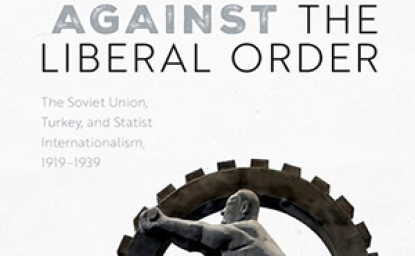#98 The USSR, Cuba, and the Crisis in Central America

By Jiri Valenta
With the 1979 Sandinista victory in Nicaragua and the ongoing civil war in El Salvador, the analysis of Soviet and Cuban involvement in the Caribbean has taken on a new urgency. This is especially true against the background of the recent vigorous Soviet and Cuban activity in the Third World in general, most notably in Africa and Afghanistan. The following paper examines Soviet-Cuban strategy, tactics, and interests in the Caribbean. It addresses the question of why the Soviets and Cubans became involved in Central America, their ties with the Central American communist parties and guerrillas, and how Central America fits into the Soviets' overall global strategy.
The paper begins by examining historical aspects of Soviet and Cuban relationships with Central America, taking into consideration the internal conditions of the countries of this region. It then relates these observations to more recent events in Central America. While the joining of Cuba to the Soviet camp is seen as a major crack in the Monroe Doctrine, the humiliation suffered by the USSR in the wake of the Cuban missile crisis temporarily dampened Soviet enthusiasm for promoting revolution in Central America. On the other hand, the U.S. assurance that it would not attack Cuba allowed the latter to remain a viable partner of the Soviets in the Third World.
Soviet involvement in the Caribbean is examined in terms of ideological, political, security, and economic interests. Likewise, Cuba's involvement in the region is considered in terms of corresponding interests of her own, for while Cuba's activities are by no means independent of the USSR's, nor are they those of a completely subservient proxy. Thus, the paper examines the degree of Cuba's dependence on the Soviet Union as well as the Soviet Union's reliance on Cuba in supporting Soviet policies in the Third World. It also considers the differing Cuban and Soviet approaches at various times in promoting their various interests in the Caribbean basin.
In addition, the paper considers the strategic value of the Caribbean for the United States. Particular attention is given to the revolution in Nicaragua and, in light of this event, the renewed vigor of the Soviets and Cubans in the promotion of revolution in Central America. Also considered is the recent aggressive posture of the hitherto mild pro-Soviet Communist party in neighboring El Salvador and the Soviet- and Cuban-sponsored changes in its tactics.
The paper concludes that Central America's volatility is governed first and foremost by socioeconomic conditions there, with Cuban/ Soviet-backed activity in the region seen to a large degree as the skillful exploitation of opportunity, and not just the result of a preconceived strategy. Finally, the author remarks on the role which the United States plays in influencing Soviet policy in the Caribbean basin.

Latin America Program
The Wilson Center’s prestigious Latin America Program provides non-partisan expertise to a broad community of decision makers in the United States and Latin America on critical policy issues facing the Hemisphere. The Program provides insightful and actionable research for policymakers, private sector leaders, journalists, and public intellectuals in the United States and Latin America. To bridge the gap between scholarship and policy action, it fosters new inquiry, sponsors high-level public and private meetings among multiple stakeholders, and explores policy options to improve outcomes for citizens throughout the Americas. Drawing on the Wilson Center’s strength as the nation’s key non-partisan policy forum, the Program serves as a trusted source of analysis and a vital point of contact between the worlds of scholarship and action. Read more

Explore More
Browse Insights & Analysis
Latin American Program Working Paper Series (51-100)

